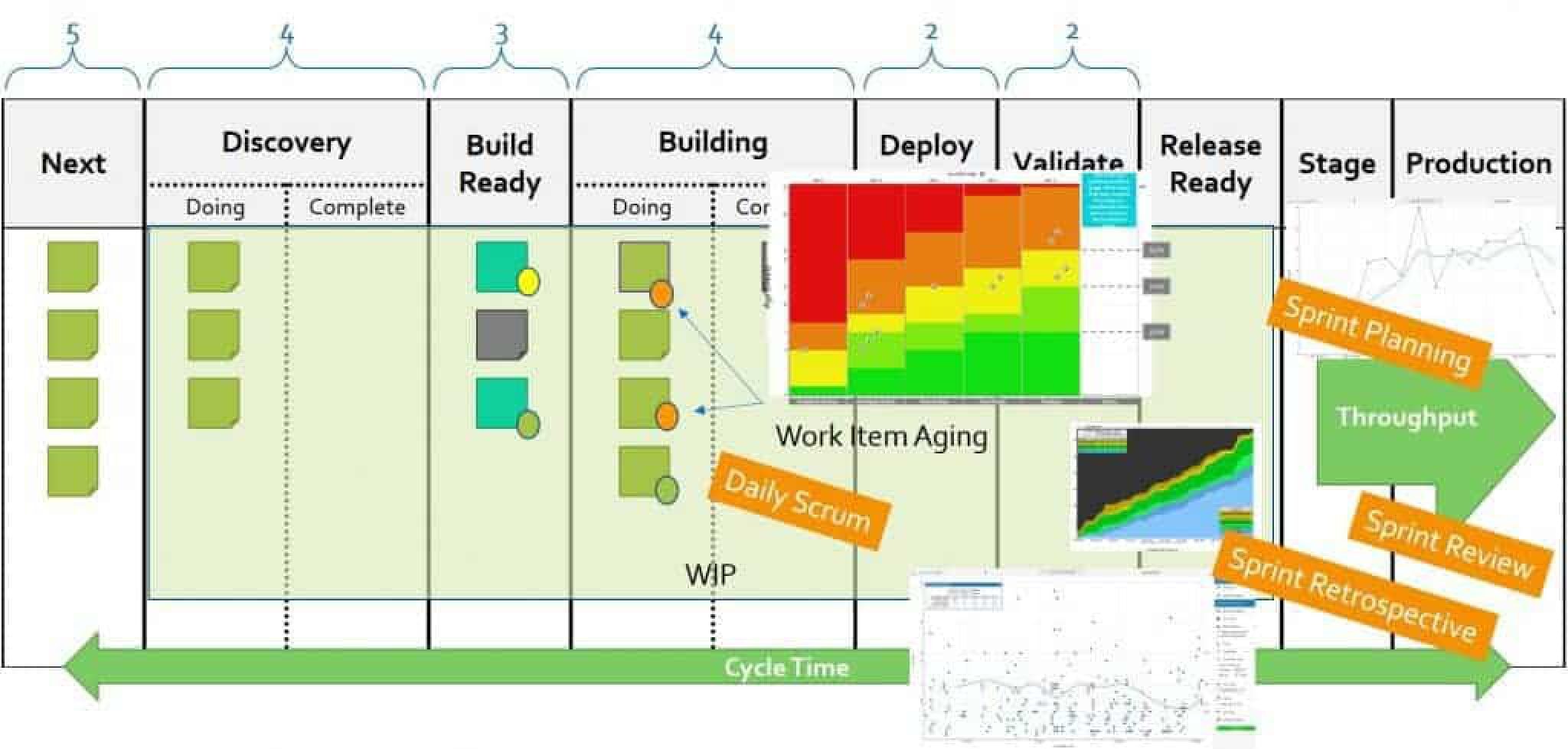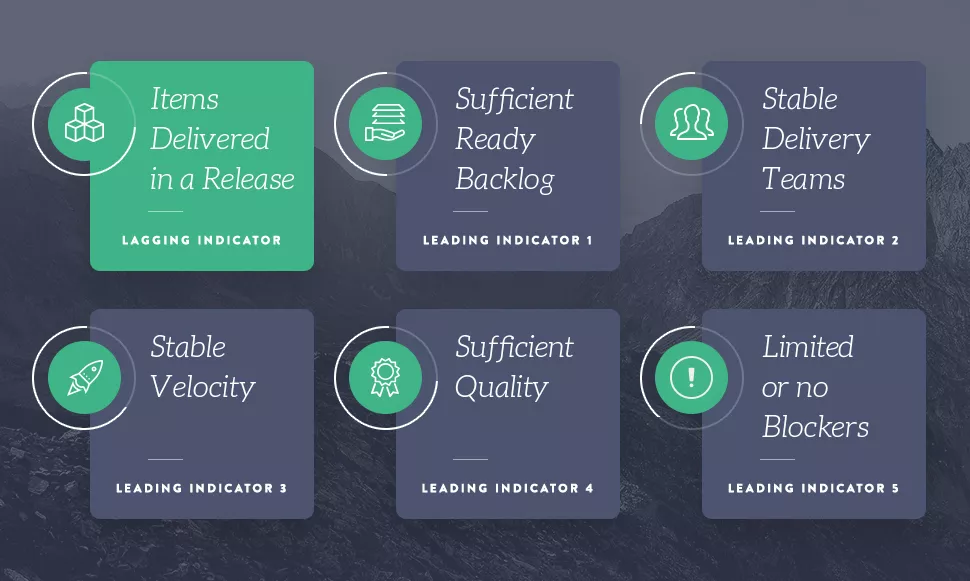Coaching Measurement: Using Metrics To Drive Performance and Areas of Improvement
By Team Lean Agile Intelligence

Agile practitioners constantly strive to enhance their performance, but identifying the areas that require improvement and the most effective approach to achieving significant results can be challenging.
The initial crucial step towards progress is to take an agile assessment that evaluates the current state of the agile process. This assessment will provide a clear picture of where you and your team stand in the process, enabling you to determine the necessary agile skills required to progress further. A free agile assessment is available here to assist you in discovering your current process status.
Coaching Measurement and The Criteria Method
At Lean Agile Intelligence, Coaching Measurement is the value that measures the individual’s ability to use metrics to drive performance. There are four main measurement criteria which are developing, emerging, adapting, and optimizing. Knowing which criteria your coaching falls under can help highlight the areas of improvement and decide on which actionable steps to take. Let’s take a closer look at each criterion and the improvement areas associated with it.
Source - Aging Work In Progress Chart
Developing
Someone “developing” an understanding of the value of Coaching Measurement and adopting the foundational techniques should focus on the following improvements:
-
The What: Facilitates tracking of Metrics (i.e., dashboard setup)
-
The How: The first step in coaching foundational techniques of metrics is simply tracking metrics. Two key points to focus on when starting to track:
-
Coach to align on the metrics as a group and with your key stakeholders. Add your metrics to your charter after agreeing to the set of metrics to track and share your intended metrics with key stakeholders for feedback and alignment.
-
Coach to have a centralized transparent “single source of truth” for team metrics. Make them easily accessible to anyone interested and include them in team norms.
-
The What: Facilitates frequent reviews of Metrics
-
The How: The metrics review should be scheduled so attendees can plan and know what to expect. Improvement ideas should be documented, added to a visualized backlog, tracked, and progress reviewed at future metric reviews.
-
The What: Teaches different strategies to make Metrics actionable and drive improvements
-
The How: A great place to start learning what types of metrics can lead to actionable improvement items is the book “Actionable Agile Metrics for Predictability” by Dan Vacanti.

Emerging
Someone “emerging” beyond the foundational techniques of Coaching Measurement and embracing it as they become more proficient should focus on the following improvements:
-
The What: Facilitates the creation of different Metrics categories (i.e., quality, time to market, customer satisfaction, employee satisfaction) and coaches how they may counteract one another
-
The How: Tracking metrics is more of an Art than an exact science; the more you focus on one metric, it can have potential unintended consequences that you may not be aware of somewhere else. Start with the outcomes you want to achieve, then relate a set of balanced metrics to those outcomes. Over time add, remove, or tweak metrics to achieve the outcomes as you see fit.
-
Part of achieving a balanced metric framework is considering the human experience. We recommend tracking employee satisfaction/happiness/engagement along with delivery, quality, and business metrics. Lean Agile Intelligence offers out-of-the-box practices you can utilize or even create your own survey/assessment from scratch. Another way to get started is to use an in-person or virtual version of the “Happiness Door.”
-
The What: Trains others on Flow Metrics (i.e., throughput, cycle time) for units of value (i.e., Epics, User Stories) and coaches how to use them effectively
-
The How: Coaches should focus on the four key flow metrics when tracking work items. These flow metrics apply to every level inside your organization, starting with agile teams. The metrics are:
-
Cycle Time: The amount of elapsed time between when a work item started and when a work item finished.
-
WIP: The number of work items started but not finished
-
Throughput: The number of work items finished per unit of time. Note the measurement of throughput is the exact count of work items.
-
Work Item Age: The amount of elapsed time between when a work item started and the current time.
-
The What: Coaches others not to look at Metrics with a singular perspective or data point but instead to analyze trends and patterns within and between teams
-
The How: Each team’s context is different. Metrics should be analyzed with patterns and trends and not single data points or a single target for all teams. Analyze trends over time to drive actionable improvement conversations.

Source - 4 Key Flow Metrics and How To Use Them
Adapting
Someone that is “adapting” Coaching Measurement to extract the full benefit should focus on the following improvements:
-
The What: Trains others on the difference between Leading and lagging indicators and coaches how to use them to identify correlations
-
The How: In addition to the book above, including Lean Agile Intelligence to track leading and lagging indicators inside your COP is a great way to learn and improve together.
-
The What: Facilitates the creation of new metrics and experiments so learnings can be shared with leadership and teams
-
The How: Establishing a balanced metric framework is the first step to coaching measures. Each metric should drive an outcome. Create a hypothesis to run experiments regarding the outcome the metric analysis is meant to drive and then adapt as the results of the experiments are transparent.

Source - Leading And Lagging Indicators
Optimizing
Someone “optimizing” knowledge sharing of the Coaching Measurement practice learnings across the enterprise should focus on the following improvements:
-
The What: Teaches and shares advanced measurement techniques outside of those they directly support (i.e., Communities of Practice, Workshops, Mentoring)
-
The How: The Agile Coach has been relentlessly spreading best practices by coaching leadership on practical Coaching Measurement, and the practice has been demonstrably improved throughout the organization.
* * * * * *
"The initial crucial step towards progress is to take an agile assessment that evaluates the current state of the agile process."
* * * * * *
Conclusion
Taking an agile assessment from Lean Agile Intelligence is an essential step toward identifying areas that require improvement in the agile process. It helps to determine the necessary agile skills needed to progress further. Coaching measurement is a value that measures an individual's ability to use metrics to drive performance. The four main criteria, developing, emerging, adapting, and optimizing, can help highlight areas of improvement and decide on actionable steps to take. The process of tracking metrics is more of an art than an exact science, and focusing on the outcomes you want to achieve is vital. Understanding the difference between leading and lagging indicators and creating new metrics and experiments to learn and share with leadership and teams can extract the full benefit of Coaching Measurement. With these improvements, agile practitioners can enhance their performance and achieve significant results. If you have not, take an agile assessment here to complete the first step to driving the best outcome for you and your team.